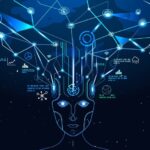
- April 23, 2018
- gscadmin
- Blog
I was recently invited to speak at the CXM Conference in Mumbai on the theme "Creating World - Class Customer Experience For Your Digitally Inspired And Demanding Customers". My session was backed up with research and other support by Xerago and IBM. And my theme is what you see in the header. I have been receiving requests from the attendees to transcribe the talk. At least, I can provide a gist.
Most understand the importance of customer experience. They know without it no business is done. However, there is little idea on how to create programs that improves it systematically. My talk today is to provide a framework thereto.
Gone are the days when you could just listen to the customers and improve the customer experience. Then, Marketers would closely hear incoming customer service calls, emails, etc. Today, Millennial do not even tell you. You need to Observe & Understand the issues, Reimagine the experience and Execute. You Observe & Understand using Analytics. You Reimagine the Experience using Digital Marketing. You Execute using Marketing Automation.
But the question is what of the Customer Experience should one Observe & Understand? What are its components? I would propose: (1) Immediacy, (2) Personalisation and (3) Convenience. Immediacy means taking less time. Personalisation means going beyond the ability to identify and address a customer by name. It is to create a right product, make him aware in the right channels, help him purchase the best way, help him consume, divest and rebuy in the best possible manner. Consider a bank that notices that your account has suddenly lost any income from salary and offer a personal loan over the channel that you usually prefer - say a phone call on Saturday afternoon. That - my friend - is Personalisation. Convenience is all about making customer spend less and less effort. That is, it is all about the Customer Journey.

But the question is what of the Customer Experience should one Observe & Understand? What are its components? I would propose: (1) Immediacy, (2) Personalisation and (3) Convenience. Immediacy means taking less time. Personalisation means going beyond the ability to identify and address a customer by name. It is to create a right product, make him aware in the right channels, help him purchase the best way, help him consume, divest and rebuy in the best possible manner. Consider a bank that notices that your account has suddenly lost any income from salary and offer a personal loan over the channel that you usually prefer - say a phone call on Saturday afternoon. That - my friend - is Personalisation. Convenience is all about making customer spend less and less effort. That is, it is all about the Customer Journey.

A case for Immediacy: A leading bank was taking about 30 days to deliver a credit card. We imagined it could all be done in just 7 days! The online pages were synched with offline channels. Online filled forms were delivered each hour to the ops team to conduct credit checks, etc. The data was also shipped to the card printing unit simultaneously. Within four days all formalities were over and the card was printed and shipped along with the filled-in printed application form with the courier. The courier agency would deliver the card, collect the signature on the application form and return.
A case for Personalisation: A leading insurance firm was bombarding all of its customers with offer for all of its 72 insurance products through all of its channels (telecall, email, etc.) with most unflattering response rates. We helped setting up the rules for contacting (e.g. never more than three mails in a month), statistically, analysed the past purchase data for product propensities (e.g. what is the product will a customer find most agreeable to purchase?), redesigned the online, email and mobile campaigns, and based on channel propensities automated and executed the campaigns. The results were astonishing 80 fold increase in sales.
A case for Convenience: A leading car maker had 17 different web-pages with several pop-ups and ajax calls with a single motive: get him/her to fill a test-drive form. Path-analysis revealed a customer journey nightmare. Customers had several stages. The one in the "I want information" stage browsed certain pages (e.g. product & price information) in a certain way (e.g. spent more time on the pages, clicked internal links, browsed related information in other sites and returned). On the other hand, the one in the "I want now a test drive" stage browsed certain other pages (e.g. where is the nearest dealer, what is the delivery time, etc.) in a certain other way (e.g. spent far lesser time and were purposive). Using Markov Models and working on Click-stream analysis, we determined which stage the customer is in: e.g. information seeking stage or ready-for-test-drive stage. Then for each of the stages, developed the likely paths a customer should take. Basis that if the customer went astray, the website would proactively 'shepherd' him/her back using relevant pop-ups and ajax calls. The test drive form-fills went up seven times.
So, here is the final framework:

When you Reimagine 'convenience' also know what you are taking away! A company made really delicious and easy-to-make cake-mix but found the sales floundering. Standard marketing research revealed little: the price was right, the procedure to make it was understood as simple & really easy and the taste was delicious. Psychologist Ernst Dichter, hypothesized that consumers wanted the pride of making the cake themselves and the all-too-easy-to-make cake mix was really "not their cake". So, to make things difficult, dried egg was removed and the consumers were asked to add eggs. Making things more "effort-full" did the trick.. sales sky-rocketed. Possibly the similar reason why Ikea furniture is also popular.
In the morning session a lady had remarked that in her five-star hotel they has installed in the rooms quick keys to order specific and most ordered food and other service items. She lamented that the guests rarely used them. Of course they would not. The only time a five-star guest would have a sense of privilege is when they talk to the customer service team (not surely with a FB post). And no "reimagineering" in convenience should take that away.
I was chatting later with Royal Enfield CMO. We both were lamenting how some of the new Bullets had a switch to start the engine - literally taking the kick away from the fun.
To conclude:
Gone are the days when customers would tell you what to do. Millennials expect that you Observe and Understand using Analytics. Reimagine using Digital Marketing. Execute using Marketing Automation. Analytical Customer Experience is about how one can improve Immediacy, Personalisation and Convenience of the Customer Journeys. So, observe and understand relevant metrics that define Immediacy, Personalisation and Convenience and later measure and analyse them. Re-imagining the journeys is about ideating, experimenting and deciding the right changes to those journeys. Executing the re-imagined journeys using marketing automation tools.
Governments already have access to your land or location records, education, health and financial data. It has the access to your social media data as well. Now add to it your movement data from CCTV cameras. What governments can do with it is truly mindboggling. Consider for e.g. the Chinese Social Credit Project.
Categories
Recent Posts
-
 Goal of AI: Human empowerment or
Goal of AI: Human empowerment orApr 08, 2021
 How to foster motivation? The material
How to foster motivation? The materialNov 03, 2020
 How to destroy motivation?
How to destroy motivation?Nov 02, 2020
 WFH – forget Coronavirus – lock-down
WFH – forget Coronavirus – lock-downMar 24, 2020
Newsletter
Get regular updates on data science, artificial intelligence, machine


